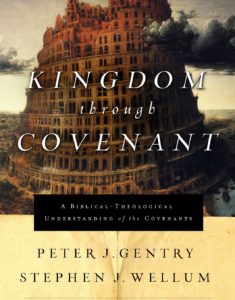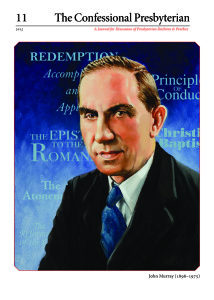There is no question whatsoever, that is of greater importance to mankind, and that it more concerns every individual person to be well resolved in, than this, what are the distinguishing qualifications of those who are in favor with God, and entitled to his eternal rewards? Or, which comes to the same thing, What is the nature of true religion? and wherein do lie the distinguishing notes of that virtue and holiness, that is acceptable in the sight of God.
WJE 2:84 (Preface to Religious Affections)

 Sinclair Ferguson uses the Marrow controversy in 18th century Scotland as a historical lens through which to examine the issues of legalism, antinomianism, and assurance. Ferguson’s thesis, as reflected in the title of the book, is that both legalists and antinomians err in separating the benefits of Christ from Christ himself. The solution to both is to not seek the benefits of Christ apart from the person of Christ. In all, this is a helpful book full of interesting history and insightful theology. I think the one improvement could be situating the response of Boston and the Marrow men in the broader context of Reformed theology. Did they respond similarly or differently to these problems than Reformed theologians in other times and places? In the multitude of historical counselors there is oftentimes safety.
Sinclair Ferguson uses the Marrow controversy in 18th century Scotland as a historical lens through which to examine the issues of legalism, antinomianism, and assurance. Ferguson’s thesis, as reflected in the title of the book, is that both legalists and antinomians err in separating the benefits of Christ from Christ himself. The solution to both is to not seek the benefits of Christ apart from the person of Christ. In all, this is a helpful book full of interesting history and insightful theology. I think the one improvement could be situating the response of Boston and the Marrow men in the broader context of Reformed theology. Did they respond similarly or differently to these problems than Reformed theologians in other times and places? In the multitude of historical counselors there is oftentimes safety. Lloyd-Jones, D. M.
Lloyd-Jones, D. M.  In this volume Wellum and Gentry embark on the ambitious project of laying out a third way between covenant theology and dispensationalism. They label their position New Covenant Theology or Progressive Covenantalism (others who hold a similar position are Tom Wells, Fred Zaspel, John Reisinger, Thomas Schreiner, and Jason Meyer). [Update 4/21/16: The authors wish to distinguish PC from NCT. The two share some similarities, but they do not wish them to be equated. Since Schreiner and Meyer both contribute to the new book on
In this volume Wellum and Gentry embark on the ambitious project of laying out a third way between covenant theology and dispensationalism. They label their position New Covenant Theology or Progressive Covenantalism (others who hold a similar position are Tom Wells, Fred Zaspel, John Reisinger, Thomas Schreiner, and Jason Meyer). [Update 4/21/16: The authors wish to distinguish PC from NCT. The two share some similarities, but they do not wish them to be equated. Since Schreiner and Meyer both contribute to the new book on 